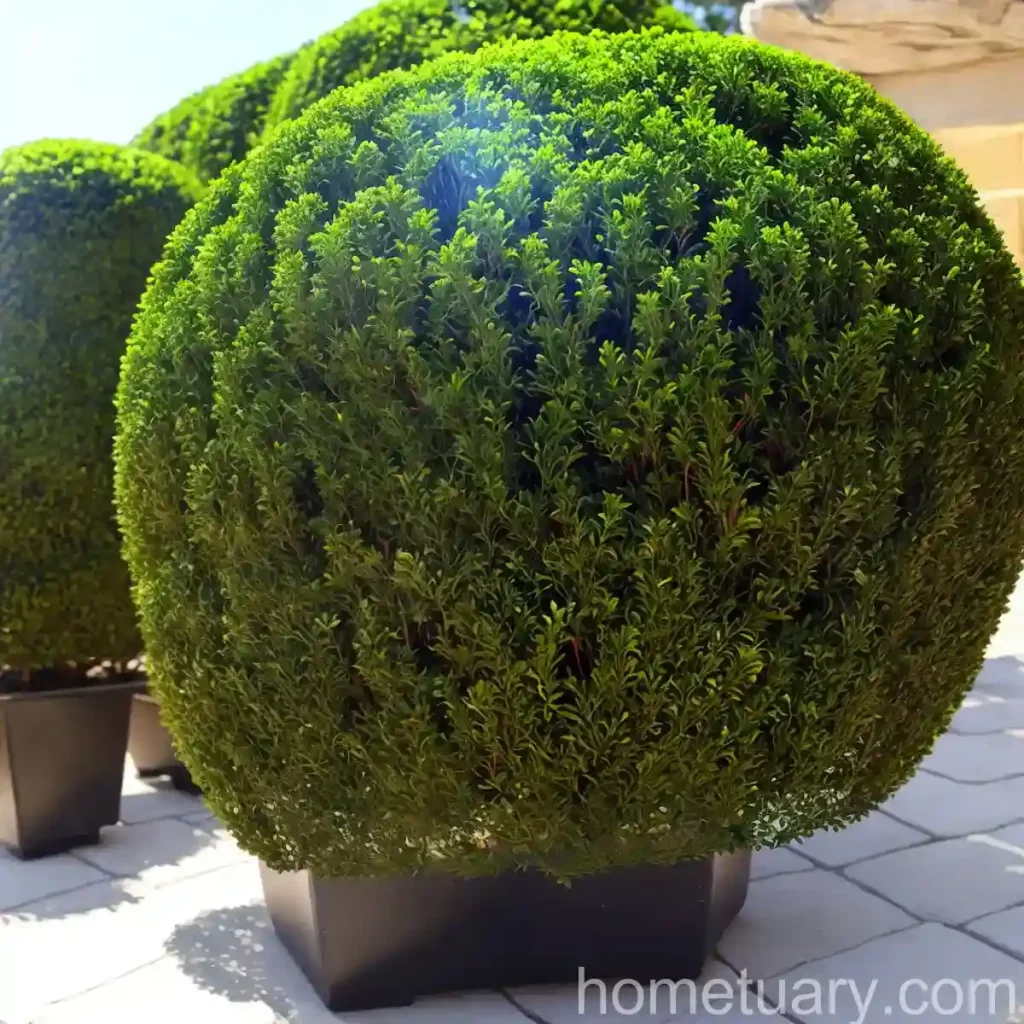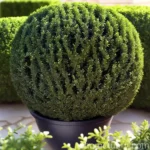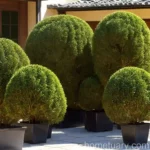Korean Boxwood (Buxus sinica var. insularis)
Introduction
When it comes to landscaping and gardening, many people are looking for plant species that are visually appealing, resilient, and relatively low-maintenance. One such plant that fits these criteria is the Korean boxwood, scientifically known as Buxus sinica var. insularis. This evergreen shrub has gained popularity due to its versatility and aesthetic appeal. In this comprehensive guide, we will delve into the various aspects of Korean boxwood, including its cultural requirements, uses, care, common diseases, pests, and much more.
What is Korean Boxwood (Buxus sinica var. insularis)?
Korean boxwood, also known by its scientific name Buxus sinica var. insularis, belongs to the family Buxaceae. Indigenous to East Asia, particularly Korea and parts of China, this evergreen shrub is known for its compact growth habit, glossy green leaves, and adaptability to various growing conditions. With its dense foliage and slow growth rate, Korean boxwood is often utilized for hedging, topiary, and as an ornamental feature in gardens and landscapes.
Key Takeaways
Before diving deep into the details, let’s take a quick look at the key takeaways related to Korean boxwood. Understanding these fundamental points will set the stage for a more in-depth exploration of this plant’s characteristics and requirements.
Key Takeaways – Korean Boxwood (Buxus sinica var. insularis)
- Scientific Name: Buxus sinica var. insularis
- Watering Requirements: Regular moisture, well-drained soil
- Sunlight Needs: Partial to full sunlight
- Soil Type: Well-draining, fertile soil
- Pruning: Requires regular pruning to maintain shape and density
- Propagation: Can be propagated through cuttings or division
- Common Diseases: Susceptible to certain fungal diseases
- Common Pests: Vulnerable to infestations by specific pests
Now, let’s proceed to explore each of these aspects in detail.
Culture
Understanding the cultural requirements of Korean boxwood is crucial for successfully growing and maintaining this plant. From watering and sunlight needs to soil type and fertilization, every aspect plays a vital role in the overall health and vigor of this shrub.
Water
Establishing an appropriate watering schedule is essential for the health and vitality of Korean boxwood. While it is essential to provide consistent moisture, it is equally important to ensure that the soil is well-drained to prevent waterlogging, which can lead to root rot and other issues.
Sunlight
Korean boxwood thrives in partial to full sunlight. It is important to provide adequate light for optimal growth and the development of its characteristic glossy foliage. However, it should be noted that excessive exposure to intense sunlight, particularly during the hottest part of the day, can lead to leaf scorch and other stress-related issues.
Fertilizer
Fertilization is an integral part of Korean boxwood care. While this shrub is not excessively demanding in terms of nutrient requirements, providing a balanced, slow-release fertilizer in the early spring can promote healthy growth and vibrant green foliage. It is crucial to follow the recommended application rates to prevent over-fertilization, which can be detrimental to the plant.
Soil
The soil type plays a significant role in the overall well-being of Korean boxwood. It thrives in well-draining, fertile soil with a slightly acidic to neutral pH. Amending the soil with organic matter can improve its structure and fertility, creating an ideal growing environment for the shrub.
Pruning
Pruning is an essential aspect of Korean boxwood maintenance. Regular pruning not only helps in maintaining the desired shape and size but also promotes denser growth and overall plant health. Proper pruning techniques, including timing and tools, are crucial for achieving the desired results without causing harm to the plant.
Propagation
Propagation of Korean boxwood can be achieved through various methods, including cuttings and division. Understanding the suitable propagation techniques is essential for expanding the plant population or rejuvenating older specimens.
Container Popularity
Korean boxwood’s compact growth habit and adaptability make it a popular choice for container gardening. Its elegant appearance and low maintenance requirements make it a preferred option for adding greenery to outdoor living spaces and landscapes.
Common Diseases
Like many plant species, Korean boxwood is susceptible to certain diseases, particularly fungal infections that can affect its foliage and overall health. Understanding these common diseases and their diagnosis is essential for timely intervention and preventive measures.
Disease Diagnosis
Recognizing the symptoms of common diseases affecting Korean boxwood, such as leaf spots and blights, is crucial for effective disease management. Early detection and appropriate treatment can help prevent the spread of infections and minimize damage to the plant.
Common Pests
In addition to diseases, Korean boxwood is also vulnerable to infestations by specific pests. Identifying these common pests and understanding their impact on the plant is essential for implementing suitable pest control measures and preserving the health of the shrub.
Botanist’s Tips
As a plant scientist, I would like to share some expert tips and recommendations for successfully growing and caring for Korean boxwood. These insights are based on scientific knowledge and practical experience, aimed at helping enthusiasts and gardeners achieve optimal results with this versatile shrub.
Expert Tips for Korean Boxwood Care
- Regular Monitoring: Regularly inspect your Korean boxwood for signs of diseases, pests, and nutrient deficiencies to address any issues promptly.
- Pruning Best Practices: Learn and apply proper pruning techniques, focusing on maintaining the natural form and structural integrity of the plant.
- Soil Testing: Periodically test the soil pH and nutrient levels to ensure that the growing conditions are optimal for Korean boxwood.
- Thorough Watering: When watering the shrub, ensure thorough penetration of the root zone to promote healthy root development and moisture uptake.
- Integrated Pest Management: Implement integrated pest management strategies to minimize reliance on chemical pesticides and maintain a balanced ecosystem in the garden.
Fun Facts
Before concluding this comprehensive guide, let’s explore some fascinating and lesser-known facts about Korean boxwood. These tidbits provide additional insight into the unique characteristics and attributes of this remarkable shrub.
Interesting Tidbits about Korean Boxwood
- The dense foliage of Korean boxwood makes it a preferred choice for creating formal hedges and intricate topiary designs.
- Korean boxwood has been utilized in traditional herbal medicine for its purported medicinal properties, which include anti-inflammatory and antioxidant effects.
- In some cultures, Korean boxwood is associated with symbolism, representing endurance, resilience, and permanence due to its evergreen nature and longevity.
As we wrap up this guide, here are some external resources where you can find additional information and support for your Korean boxwood cultivation and care journey.
Links to External Resources
- American Society of Plant Biologists
- Royal Horticultural Society
- University of California Agriculture and Natural Resources
- The American Phytopathological Society
- Missouri Botanical Garden
In conclusion, Korean boxwood (Buxus sinica var. insularis) is a versatile and visually appealing shrub that holds considerable appeal for both gardeners and landscaping enthusiasts. Its adaptability, low maintenance requirements, and aesthetic charm make it a valuable addition to various outdoor settings. By understanding and implementing the essential cultural practices, disease prevention strategies, and expert recommendations, you can ensure the health and beauty of Korean boxwood in your garden or landscape.
I hope this guide serves as a valuable resource for anyone seeking to explore the world of Korean boxwood and embark on a rewarding journey of cultivation and care for this exceptional plant species.















